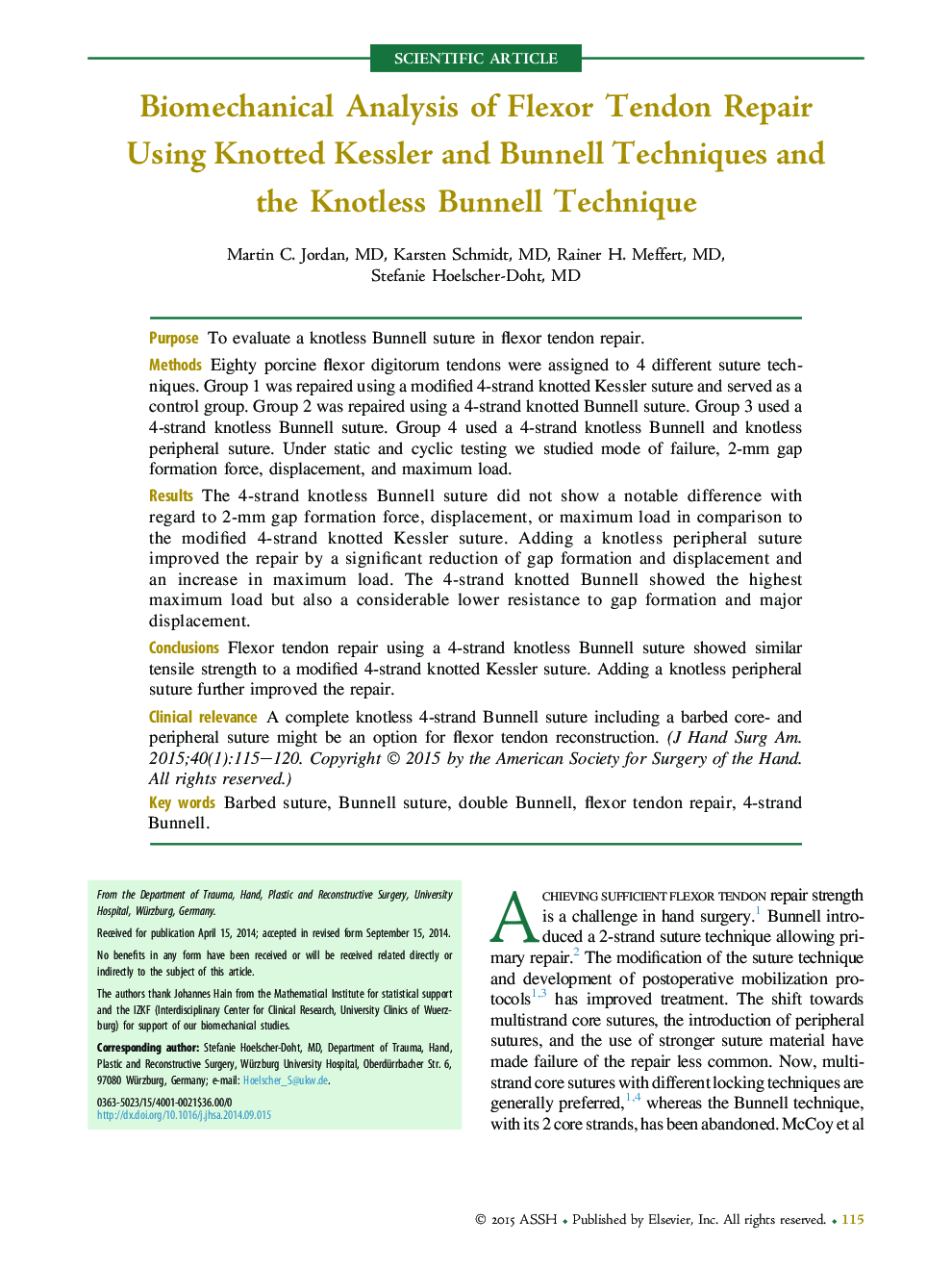| Article ID | Journal | Published Year | Pages | File Type |
|---|---|---|---|---|
| 4066774 | The Journal of Hand Surgery | 2015 | 6 Pages |
PurposeTo evaluate a knotless Bunnell suture in flexor tendon repair.MethodsEighty porcine flexor digitorum tendons were assigned to 4 different suture techniques. Group 1 was repaired using a modified 4-strand knotted Kessler suture and served as a control group. Group 2 was repaired using a 4-strand knotted Bunnell suture. Group 3 used a 4-strand knotless Bunnell suture. Group 4 used a 4-strand knotless Bunnell and knotless peripheral suture. Under static and cyclic testing we studied mode of failure, 2-mm gap formation force, displacement, and maximum load.ResultsThe 4-strand knotless Bunnell suture did not show a notable difference with regard to 2-mm gap formation force, displacement, or maximum load in comparison to the modified 4-strand knotted Kessler suture. Adding a knotless peripheral suture improved the repair by a significant reduction of gap formation and displacement and an increase in maximum load. The 4-strand knotted Bunnell showed the highest maximum load but also a considerable lower resistance to gap formation and major displacement.ConclusionsFlexor tendon repair using a 4-strand knotless Bunnell suture showed similar tensile strength to a modified 4-strand knotted Kessler suture. Adding a knotless peripheral suture further improved the repair.Clinical relevanceA complete knotless 4-strand Bunnell suture including a barbed core- and peripheral suture might be an option for flexor tendon reconstruction.
